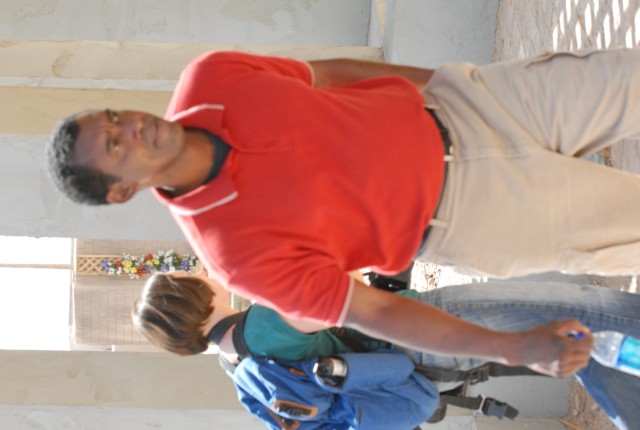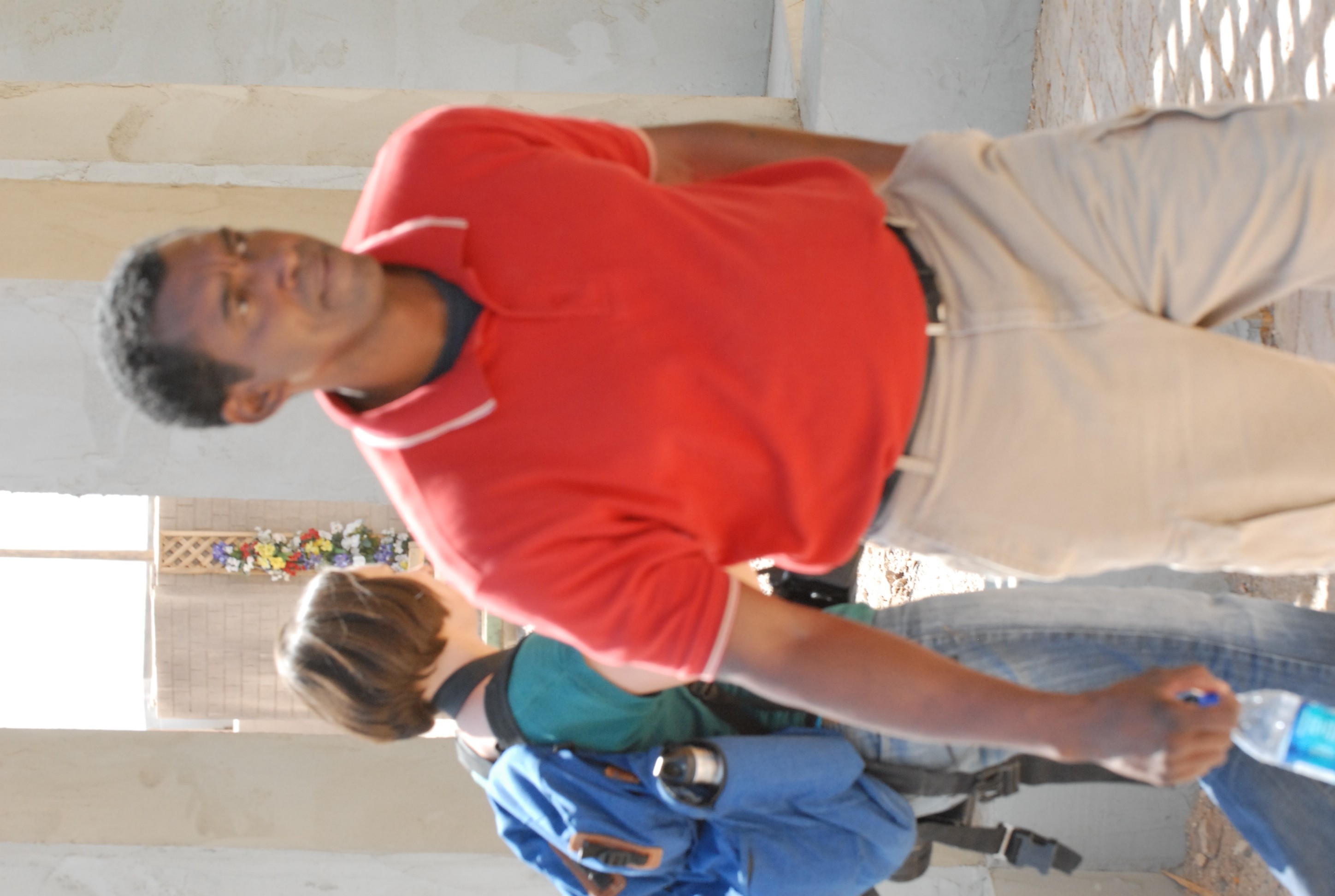
Whether it's Katie Couric from CBS or the local reporter from the Desert Dispatch in nearby Barstow, Calif., Fort Irwin and National Training Center Media Relations Officer Etric Smith treats each the same.
"I don't promise them they're going to get everything on their wish list, but we give it our best effort," Mr. Smith said, noting that because of the constant changes in rotational training at NTC, it's impossible to guarantee any media outlet exactly what they'll experience in during their stay at Fort Irwin.
That being said, Mr. Smith said the sooner he receives a request from a media organization, the greater the likelihood that their wish list can be filled.
"I'm not the subject matter expert. I'm the conduit between the media and the subject matter experts and I work with the rotational units to make it happen," he said.
Some story ideas lend themselves to situational training exercises, while others are best suited for full-scale operational training exercises, all which occur at different times during each rotation, he said.
"I try to meet them with 200 percent and give them the best effort and professionalism to make it difficult them to write a difficult piece," Mr. Smith said.
One of those media representatives during a recent rotation was Lisa Browne, senior strategic communications consultant- JIEDDO with The Wexford Group, had high praise for the work Mr. Smith does.
"Etric is exceptionally well-organized and he does his best to make any job fun," Ms. Brown said, noting that her experiences in working with Mr. Smith have been nothing but positive.
Mr. Smith takes each person he works with seriously, while not taking himself too seriously in the process, which is a great help, she said.
"You tell Etric what you're looking for and he can come up with a way to make it happen," she said. "He also works with you to come up with other ideas and he takes pride in what you're trying to accomplish."
In his 15 months as the Fort Irwin/NTC MRO, Mr. Smith said he has yet to receive any negative feedback from the hordes of media who have been inside the Box and developed stories and other media pieces from their experiences.
Such success is the result of what is often times months of hard work and planning ahead of media visits, which are the final result of an ongoing dialogue with media organizations prior to them actually arriving at Fort Irwin and NTC, he said.
"Every media organization is important, regardless of size," he said, adding that because of the time and money each organization spends to travel to NTC, doing everything possible to get them the story they want is a priority.
With the expansion of the Internet, even smaller media outlets can reach broad audiences, which often rival that of their larger counterparts, he said.
"Giving them access gives us the opportunity to tell the Army and the NTC story," he said, stressing the importance of media access to the training activities at the installation.
Mr. Smith tries to procure copies of all of the stories that each media organization produces from their visit to NTC, and uses a search engine to locate stories if a media organization fails to provide one.
"As long as it's fair and balanced, I consider it a success," he said.
While many media organizations stay in the hotel in Medina Wasl to get their stories, others play a role in enhancing rotational unit training through the embed program, he said.
When a reporter or organization requests to be embedded with a rotational unit, Mr. Smith said he serves as the liaison between the media organization and the rotational unit's Public Affairs Office.
"I have received feedback from PAOs in Afghanistan and Iraq that have told me it prepared them for dealing with real media in theater," he said.
In making the embed process as realistic as possible, each rotational unit is responsible for ensuring embedded media has a place to sleep, eat and gets as much from their media wish list as possible, he said.
"Determining how prepared the unit's public affairs program is, that's not my responsibility," he said, noting that some rotational units like the Fourth Brigade, First Infantry Division from Fort Riley, Kan. are extremely media savvy.
Each unit's Public Affairs Officer has the responsibility for ensuring that the proper message gets out and has to use sound judgment in delegating public affairs tasks, he said.
"Soldiers need to know that there is no such thing as 'off-the-record,'" he said.
Fortunately, there haven't been any difficult stories from embedded media and that is a credit to everyone who plays a role in the training at NTC, Mr. Smith said.
While the job often entails long hours and time away from his family, Mr. Smith said he still loves his job as the Fort Irwin/NTC MRO.
"It lets me use all my gifts, and I just respect the craft and all it entails," he said.

Social Sharing